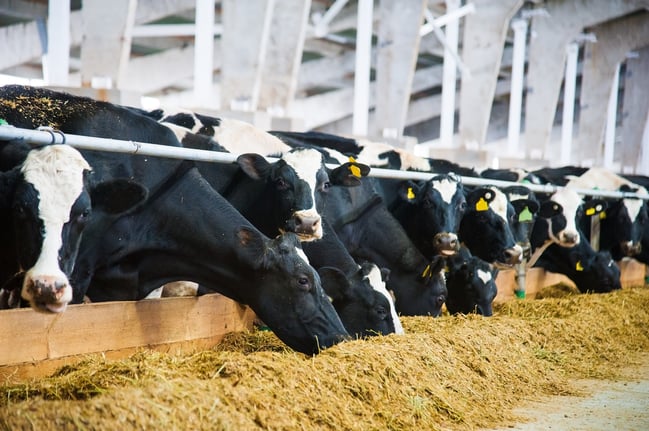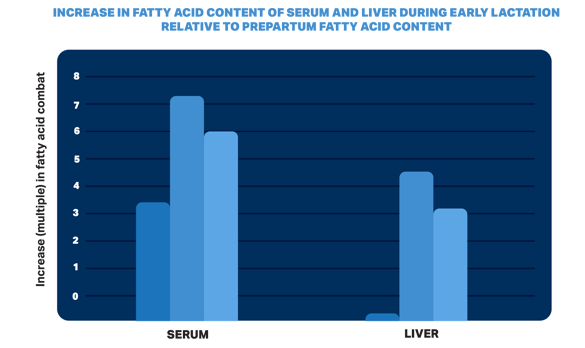HIGH STEARIC ACID FATS MAY REDUCE FATTY LIVER TROUBLES
Posted by Dr. Jim Lofton on Jun 9, 2022 12:55:00 PM

Proper nutritional management of the transition cow helps reduce the risk of fresh cow metabolic problems, increase milk production, and maximize fertility. Recent research indicates that the fatty acid profile of dietary fat may significantly affect the amount of fat that accumulates in the liver of early lactation cows.
Fat deposition occurs in the liver of all dairy cows around the time of calving. The clinical disorder, which often is termed "fatty liver syndrome”, appears when excessive fat accumulates in the liver. Outward signs in- clude a generalized failure to "come into milk," reduced immune function and increased incidence of other common post-calving diseases & dis- orders such as ketosis, poor responses to treatment for other diseases, decreased milk production, & impaired reproductive performance.
Cows are in negative energy balance during early lactation. Mobilization of body energy reserves to meet the energy needs of milk production also results in the accumulation of fat in the liver due to the liver’s limited ability to metabolize or secrete fats.
Stearic Acid Does Not Accumulate in the Liver
Recent research has shown that dietary fats high in stearic acid (C18:0) and low in palmitic (C16:0), oleic (C18:1) and linoleic (C18:2) acids may reduce liver triglyceride accumulation in early lactation cows. Stearic acid appears to be preferentially used by either the liver for oxidation (energy) and/or by the mammary gland for milk fat secretion.
Researchers demonstrated that despite serum concentrations of palmitic and stearic acids increasing to nearly identical levels postpartum, no stearic acid accumulated in the liver, even though liver concentrations of palmitic, oleic, and linoleic acids increased dramatically (four to six times in cows that developed fatty liver). The researchers observed similar changes in serum and liver fatty acid content in cows that did not develop fatty liver, but increases were of a lower magnitude (2-3x).
This work validated earlier research documenting that during fatty liver development, stearic, oleic, and palmitic acid contents increased by 70%, 860%, and 900%, respectively. Another study simulating the metabolic effects that occur in transition cows demonstrated that feeding calcium soaps of long-chain fatty acids increased liver triglyceride accumulation and reduced rate of liver fat excretion. Eight different publications now support the concept that different dietary fatty acid profiles and feeding management practices affect development of fatty liver.

Supply Extra Energy Needs Without Sacrificing Dry Matter Intake
When dry matter intake (DMI) declines or energy requirements are greater than energy intake, alternate sources of energy must be found. If dietary energy intake is not increased, the body begins mobilization of body fat stores and fatty livers can develop. Feeding an appropriate supplemental fat can lower fatty liver risk factors. When choosing a supplement for transition and high producing cows, select a fat that: 1) does not depress DMI; 2) is high in stearic acid to minimize fat accumulation in the liver; and 3) has the highest Net Energy for Lactation to meet the cow’s energy requirements.
- Due to high palmitic, oleic and linoleic acid content, calcium soaps of long-chain fatty acids should be avoided in early- lactation diets as they may increase the incidence and severity of fatty liver.
- Stearic acid does not appear to accumulate in the liver.
- Energy Booster 100® is the only fat with a high stearic acid content and minimal palmitic, oleic and linoleic acid content that is highly digestible.
-
In addition to providing the highest NEL value, Energy Booster 100® does not depress DMI.
Topics: ANIMAL NUTRITION
